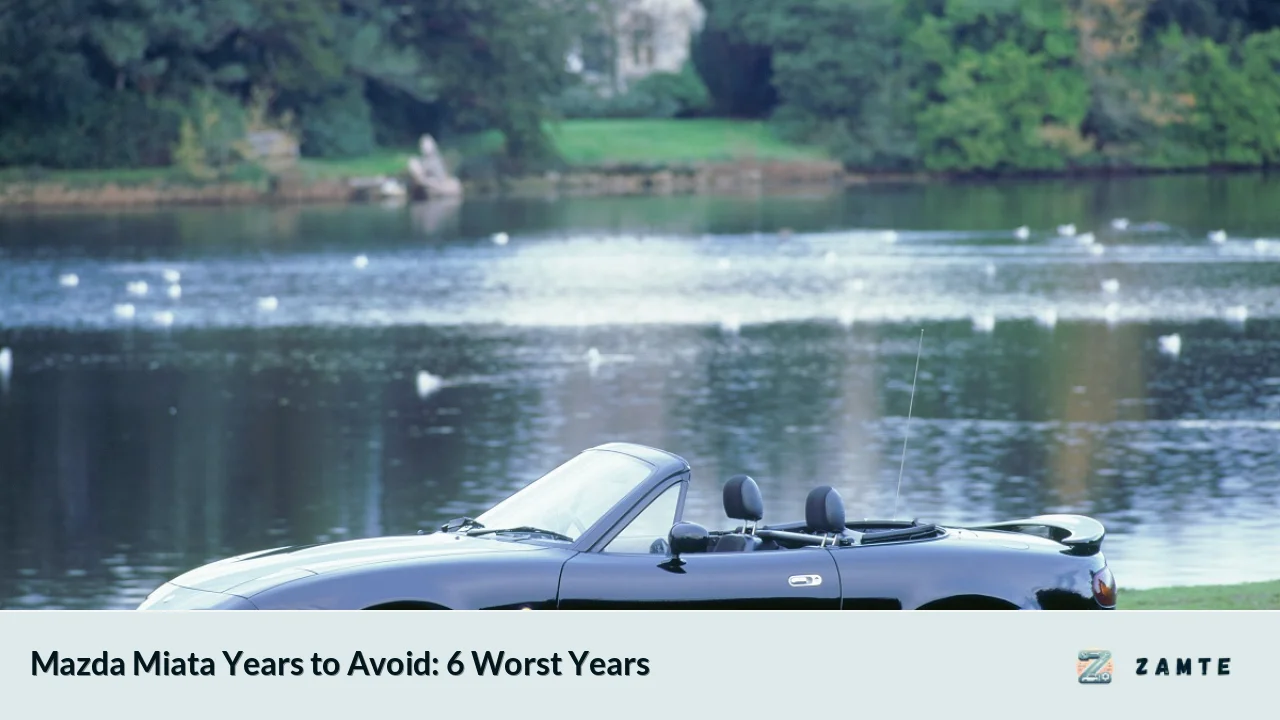The Mazda Miata, known for its lightweight design and engaging driving experience, has captivated car enthusiasts since its debut in 1990. However, like any vehicle, certain model years have been plagued with issues that can detract from the ownership experience. This guide aims to identify the years to avoid when considering a Mazda Miata, focusing on common problems, reliability ratings, and owner feedback.
When purchasing a used Mazda Miata, it's essential to be aware of the specific years that have garnered negative feedback from owners and automotive experts alike. Understanding these problematic years can help you make an informed decision, ensuring that your investment in this iconic sports car is as enjoyable as possible.
Common Issues Across Generations
Before diving into specific years to avoid, it's important to recognize some common issues that can affect the Mazda Miata across various generations:
- Rust: One of the most significant problems affecting older Miatas is rust, particularly around the rocker panels and wheel arches. Owners should inspect these areas carefully, especially in regions where salt is used on roads during winter.
- Transmission Problems: Certain model years have reported issues with manual transmissions, including stuck gears and premature wear of components.
- Electrical System Failures: Various models have experienced electrical gremlins, including malfunctioning power windows and climate control systems.
- Cooling System Leaks: Overheating can be a concern if the cooling system is not functioning properly, often due to leaks or faulty components.
1990 Mazda Miata
The inaugural year of the Miata is often cited as one to avoid. Common issues include:
- Transmission Problems: A notorious issue with the 1990 model involves a pin in the manual transmission that can come loose when shifting from reverse to first gear. This can leave the transmission stuck in reverse unless repaired properly.
- Coolant Cap Issues: The rubber coolant plug at the back of the cylinder head is prone to cracking, leading to coolant leaks and potential overheating.
1991 Mazda Miata
While improvements were made over the 1990 model, some electrical issues persisted:
- Electrical Failures: Owners reported problems with the A/C clutch not engaging and other electrical system malfunctions.
1999 Mazda Miata
The 1999 model year is often criticized for its engine-related problems:
- Oil Consumption: The BP engine used in this generation is known for excessive oil consumption; some owners report using up to two quarts every month without any warning lights.
2001 Mazda Miata
The second-generation Miata (NB) brings several improvements but also some significant drawbacks:
- Electrical Issues: Reports indicate frequent electrical failures related to wiring connections and battery discharge problems.
- Paint Quality: The paint on this model year has been noted for peeling prematurely, leading to aesthetic concerns that may require costly repainting.
2007 and 2008 Mazda Miata
Both of these model years are part of the third generation (NC) and share several common problems:
- Battery Discharge Issues: Many owners reported unexpected battery drain due to electrical system malfunctions.
- Paint Peeling: Like their predecessors, these models also suffer from poor paint quality that can lead to rust if not addressed promptly.
2016 Mazda Miata
The fourth generation (ND) introduced new technologies but also some reliability concerns:
- Interior Accessory Problems: Owners have reported various issues ranging from malfunctioning infotainment systems to suspension problems.
Conclusion
When considering a used Mazda Miata, it's crucial to be aware of the specific model years that are best avoided due to common issues reported by owners. The 1990, 1991, 1999, 2001, 2007, 2008, and 2016 models have all shown tendencies towards significant reliability concerns that could affect your overall enjoyment of this beloved sports car.
By focusing on later model years or those known for their reliability—such as the later iterations of the second generation (2005-2006) and third generation (2009 onward)—you can enhance your chances of finding a dependable and enjoyable vehicle.
FAQs
- What are the worst years for the Mazda Miata?
The worst years include 1990, 1991, 1999, 2001, 2007, 2008, and 2016 due to various mechanical and electrical issues. - Is rust a common problem in older Miatas?
Yes, rust is a significant concern in older models, especially around rocker panels and wheel arches. - What should I check before buying a used Miata?
Inspect for rust damage, check the condition of the soft top or hardtop, and ensure all electrical systems function properly. - Are there any reliable model years for the Mazda Miata?
Yes, models from later generations such as 2005-2006 and post-2009 are generally considered more reliable. - How can I prevent rust on my Miata?
Regular maintenance including washing off salt during winter months and applying wax can help prevent rust.
